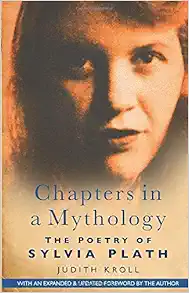To access password-protected material, contact your professor or a librarian.
 Naming the Unnameable: An Approach to Poetry for New Generations
by
Michelle Bonzcek Evory
Naming the Unnameable: An Approach to Poetry for New Generations
by
Michelle Bonzcek Evory
Excerpt from "Wanderer above the Sea of Fog" (1818), by Caspar David Friedrich. An Introduction to British Romanticism - The Poetry Foundation.
Romanticism was arguably the largest artistic movement of the late 1700s. Its influence was felt across continents and through every artistic discipline into the mid-nineteenth century, and many of its values and beliefs can still be seen in contemporary poetry.
From, A Brief Guide to Romanticism.

William Blake by Thomas Phillips © National Portrait Gallery, London.
William Blake was a 19th-century writer and artist who is regarded as a seminal figure of the Romantic Age. His writings have influenced countless writers and artists through the ages.
Blake was a nonconformist who associated with some of the leading radical thinkers of his day, such as Thomas Paine and Mary Wollstonecraft. In defiance of 18th-century neoclassical conventions, he privileged imagination over reason in the creation of both his poetry and images, asserting that ideal forms should be constructed not from observations of nature but from inner visions.

Quirke, Antonia. The Tough Side of John Keats, The New Statesman, UK Edition. January 9, 2019.
John Keats was an English poet prominent in the second generation of Romantic poets, with Lord Byron and Percy Bysshe Shelley, although his poems had been published for only four years when he died of tuberculosis at the age of 25. They were indifferently received, but his fame grew rapidly after his death.

Emily Elizabeth Dickinson was an American poet. Little-known during her life, she has since been regarded as one of the most important figures in American poetry. Dickinson was born in Amherst, Massachusetts into a prominent family with strong ties to its community.
Poems by Emily Dickinson
Poems About Emily Dickinson

DN-0071801, Chicago Daily News negatives collection, Chicago History Museum
William Butler Yeats was an Irish poet, dramatist, prose writer and one of the foremost figures of 20th-century literature. A pillar of the Irish literary establishment, he helped to found the Abbey Theatre, and in his later years served two terms as a Senator of the Irish Free State.
Widely considered one of the greatest poets of the English language, Yeats received the 1923 Nobel Prize for Literature. His work was greatly influenced by the heritage and politics of Ireland.

Tate, Greg. "Langston Hughes: A Genius Child Comes of Age". The Village Voice. July 1, 1988.
Writer Langston Hughes was the leading voice of the Harlem Renaissance, showcasing the dignity and the beauty in ordinary black life. The hours he spent in Harlem clubs affected his work, making him one of the innovators of Jazz Poetry. He worked as a social activist in addition to writing novels, plays and poems. Hughes was a descendent of the political Langston family.
From The Collected Works of Langston Hughes:
 Sylvia Plath. Bettmann / Getty Images
Sylvia Plath. Bettmann / Getty Images
Sylvia Plath was one of the most dynamic and admired poets of the 20th century. By the time she took her life at the age of 30, Plath already had a following in the literary community. In the ensuing years her work attracted the attention of a multitude of readers, who saw in her singular verse an attempt to catalogue despair, violent emotion, and obsession with death. In the New York Times Book Review, Joyce Carol Oates described Plath as “one of the most celebrated and controversial of postwar poets writing in English.” Intensely autobiographical, Plath’s poems explore her own mental anguish, her troubled marriage to fellow poet Ted Hughes, her unresolved conflicts with her parents, and her own vision of herself.
I'm a riddle in nine syllables,
An elephant, a ponderous house,
A melon strolling on two tendrils.
O red fruit, ivory, fine timbers!
This loaf's big with its yeasty rising.
Money's new-minted in this fat purse.
I'm a means, a stage, a cow in calf.
I've eaten a bag of green apples,
Boarded the train there's no getting off.
 Chapters in a mythology: The poetry of Sylvia Plath
by
Judith Kroll
Chapters in a mythology: The poetry of Sylvia Plath
by
Judith Kroll
During her life, poet and essayist Adrienne Rich was one of America’s foremost public intellectuals. Widely read and hugely influential, Rich’s career spanned seven decades and has hewed closely to the story of post-war American poetry itself. Her earliest work, including A Change of World (1951) which won the prestigious Yale Younger Poets Award, was formally exact and decorous, while her work of the late 1960s and 70s became increasingly radical in both its free-verse form and feminist and political content (PoetryFoundation.org).
 Diving into the Wreck 1971-1972
by
Adrienne Rich
Diving into the Wreck 1971-1972
by
Adrienne Rich
While William Shakespeare’s reputation is based primarily on his plays, he became famous first as a poet. With the partial exception of the Sonnets (1609), quarried since the early 19th century for autobiographical secrets allegedly encoded in them, the nondramatic writings have traditionally been pushed to the margins of the Shakespeare industry. Yet the study of his nondramatic poetry can illuminate Shakespeare’s activities as a poet emphatically of his own age, especially in the period of extraordinary literary ferment in the last ten or twelve years of the reign of Queen Elizabeth.
At The Mosque by Chairil Anwar
I shouted at Him
Until He came
We met face to face.
Afterwards He burned in my breast.
All my strength struggles to extinguish Him
My body, which won't be driven, is naked with sweat
This room
Is the arena where we fight
Destroying each other
One hurling insults, the other gone mad.

The Harlem Renaissance was a period in American history from the 1920s and 1930s. During this time, many African-Americans migrated from the South to Northern cities, seeking economic and creative opportunities. Within their communities, creative expression became an outlet for writers, musicians, artists, and photographers, with a particular concentration in Harlem, New York
Carl Van Vechten, © Van Vechten Trust. Beinecke Rare Book and Manuscript Library, Yale University
Poems by Claude McKay

Author Dorothy West and poet Helene Johnson (standing, second and third from left) with friends at the Gay Head Light in the 1930s. Photo courtesy Martha's Vineyard Museum.
